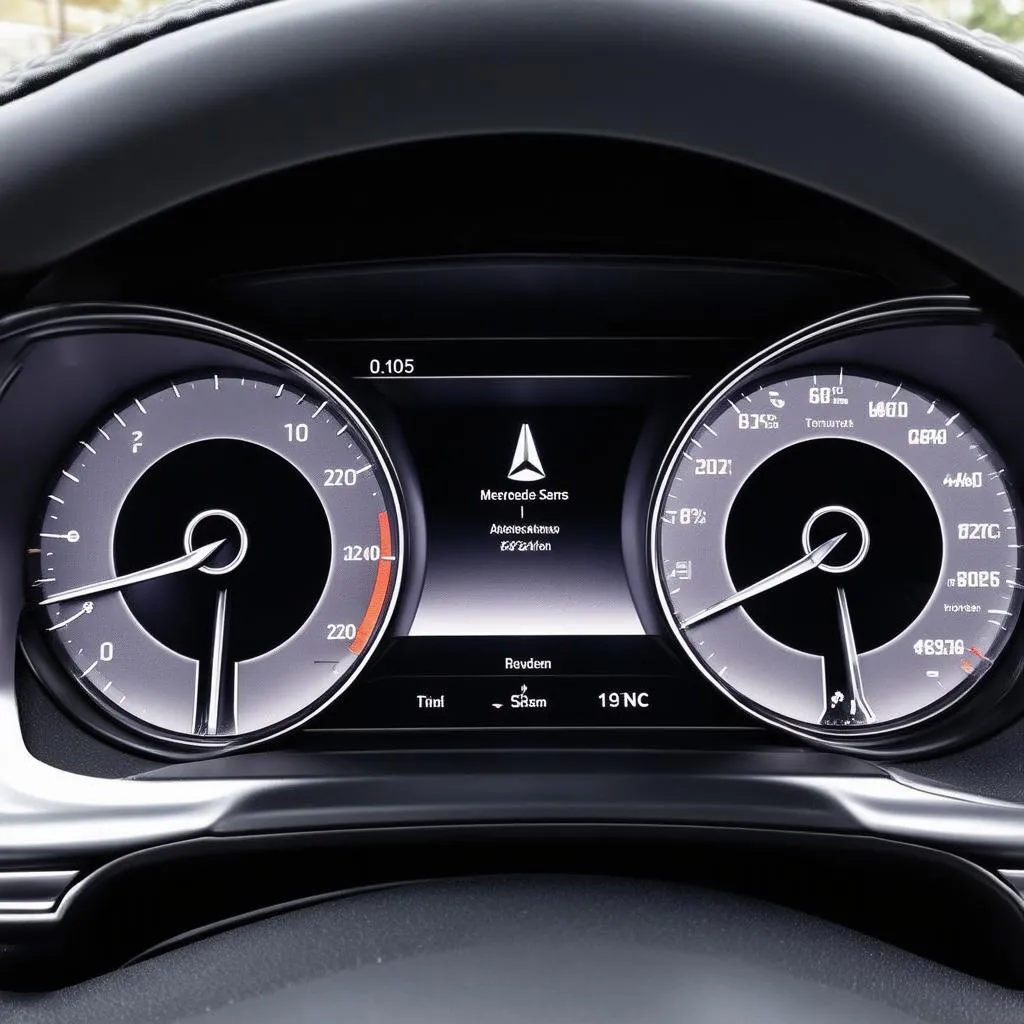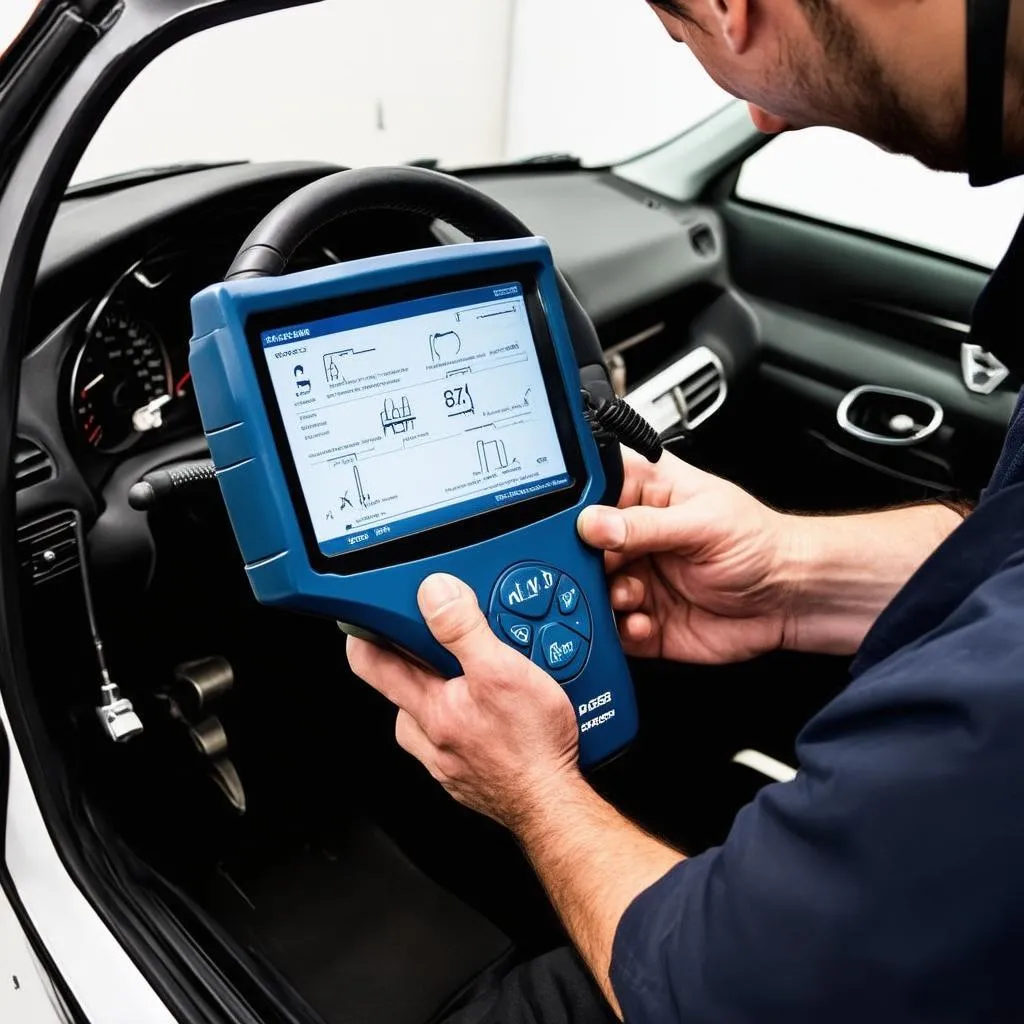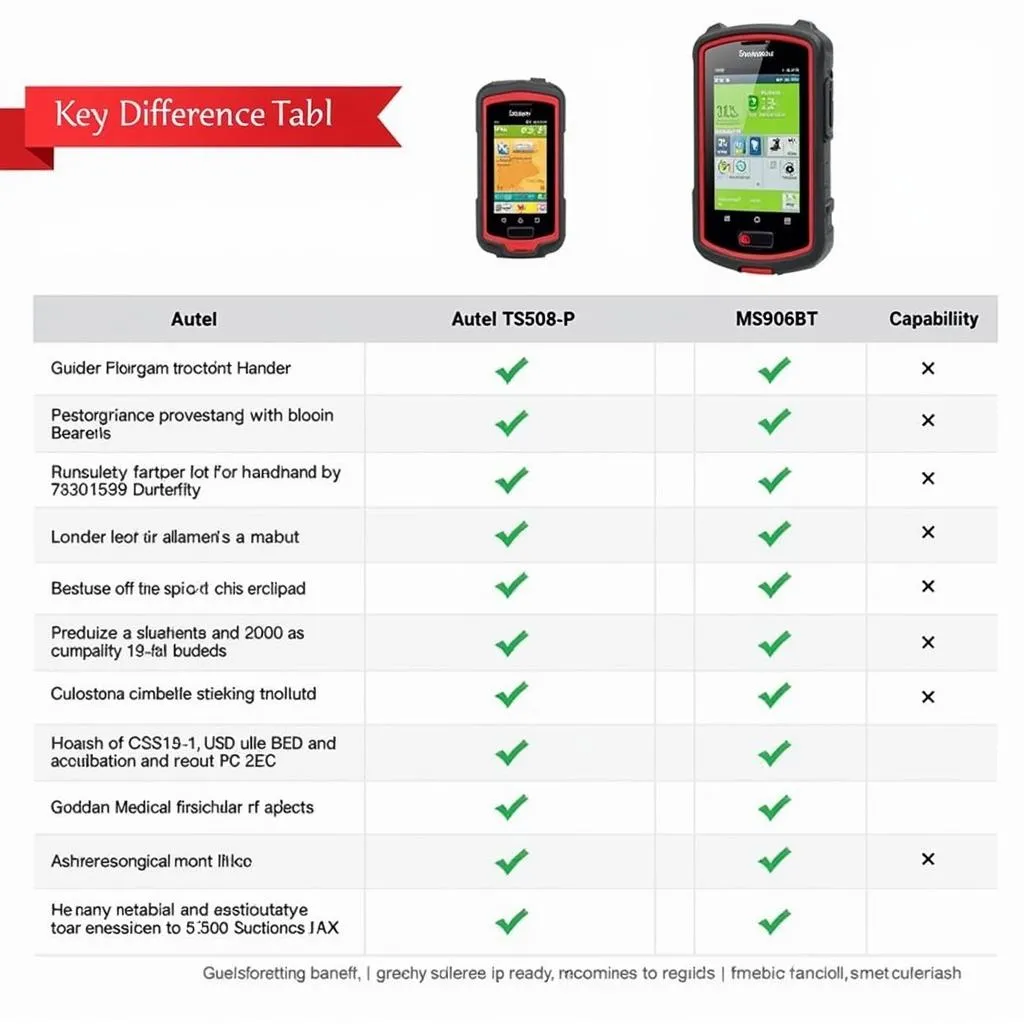Have you ever been driving your Mercedes and suddenly, a warning light pops up on your dashboard, displaying “EPC”? Panic sets in, right? You might think, “What is this EPC fault, and will it cost me a fortune to fix?”
Don’t worry! This article will guide you through understanding Mercedes EPC fault codes, their causes, potential solutions, and how to navigate this situation like a pro.
What is a Mercedes EPC Fault?
The “EPC” or “Electronic Power Control” fault code is a common issue that can arise in Mercedes vehicles. It’s essentially your car’s way of telling you that there’s a problem with its electronic throttle control system.
Let’s break down the EPC fault’s meaning from multiple perspectives:
1. From a Psychological Perspective
Imagine driving along a scenic highway when suddenly, a red light flickers on your dashboard, flashing “EPC.” It’s like a voice whispering, “Your car’s power is at risk.” It’s a jarring experience, evoking anxiety about safety and potential repair costs.
2. From a Mechanic’s Perspective
A mechanic, upon encountering this fault, knows that the car’s electronic throttle control system, which regulates the engine’s power and response, is experiencing a glitch. This system relies on sensors, actuators, and electronic control modules to work seamlessly.
3. From a Technical Perspective
The EPC system in your Mercedes uses sophisticated sensors to monitor the engine’s speed, air intake, and throttle position. If any of these sensors malfunction, or if the control module itself is faulty, the car might activate the “EPC” warning.
4. From an Economic Perspective
The EPC fault can range from minor to serious. In some cases, it might simply require resetting the system, while other instances might involve replacing faulty components, leading to varying repair costs.
Understanding Common Causes of EPC Fault
The most common causes of a Mercedes EPC fault include:
- Faulty Throttle Position Sensor: This sensor monitors the throttle’s position and relays the information to the engine control unit (ECU). A malfunctioning sensor can lead to inaccurate readings and affect throttle response.
- Defective Throttle Actuator: The throttle actuator is responsible for opening and closing the throttle based on the ECU’s commands. If this actuator fails, it can restrict or prevent the throttle from responding properly.
- Electrical Issues: A faulty wiring harness, corroded connectors, or a short circuit in the electrical system can disrupt communication between the ECU and other components, leading to an EPC fault.
- Software Glitch: While less common, a software glitch in the ECU’s programming can also cause the EPC warning to appear.
Common Symptoms of a Mercedes EPC Fault
Here are some common symptoms you might experience when your Mercedes throws an EPC fault:
- Reduced engine power: You might feel a noticeable decrease in your car’s acceleration and power.
- Hesitation during acceleration: The engine might hesitate or lag when you press the accelerator.
- Rough idling: The engine might idle rough or stall at low speeds.
- Check Engine Light: The EPC fault is often accompanied by the Check Engine Light illuminating.
Troubleshooting and Potential Solutions
If you encounter an EPC fault in your Mercedes, the first step is to connect a diagnostic scanner to retrieve the specific fault code. This code will provide valuable information about the specific issue.
Here are some potential solutions based on common EPC fault codes:
- Resetting the ECU: In some cases, a simple ECU reset might resolve the issue.
- Replacing the Throttle Position Sensor: If the diagnostic scanner points to a faulty throttle position sensor, replacing it is crucial.
- Inspecting the Throttle Actuator: Check the throttle actuator for proper operation and make sure it’s not stuck or damaged.
- Repairing Electrical Issues: If electrical issues are causing the EPC fault, inspecting the wiring harness, connectors, and fuse box is necessary.
- Updating the ECU Software: A software update might address a programming glitch causing the EPC fault.
What To Do When You Encounter EPC Fault
While it’s tempting to panic, encountering an EPC fault doesn’t necessarily mean your Mercedes is on its last legs. Here’s a step-by-step approach:
- Pull Over Safely: When the EPC fault appears, prioritize safety by finding a safe place to pull over.
- Turn Off the Engine: Turn off the ignition to give the system a chance to reset.
- Restart the Engine: Try restarting the engine. If the EPC fault disappears, it might have been a temporary glitch.
- Monitor the Situation: Continue driving carefully and observe whether the EPC fault reappears.
- Seek Professional Help: If the EPC fault persists or worsens, contact a certified Mercedes mechanic or a reputable auto repair shop specializing in European vehicles.
Is the EPC Fault a Sign of Bad Karma?
Some people might believe that an EPC fault is a sign of bad karma or a manifestation of negative energy. However, it’s essential to understand that the car’s electronic systems are complex and prone to malfunctions due to various factors like wear and tear, electrical issues, or software glitches.
While incorporating mindfulness and positive energy into your life can be beneficial, it’s important to address the EPC fault from a pragmatic perspective and seek professional help.
FAQs About EPC Fault in Mercedes
-
Q: Is the EPC fault dangerous?
- A: In some cases, it can lead to reduced power or hesitation during acceleration, making driving challenging. It’s important to address the issue promptly.
-
Q: How much does it cost to fix an EPC fault?
- A: Repair costs vary depending on the cause and the specific component requiring replacement.
-
Q: Can I drive my Mercedes with an EPC fault?
- A: While it’s possible to drive with an EPC fault, it’s not recommended. The fault might worsen, leading to further damage.
-
Q: Can I reset the EPC fault myself?
- A: You can try resetting the ECU, but it might not permanently resolve the issue. It’s best to seek professional help.
Conclusion
The EPC fault is a common issue in Mercedes vehicles, but it doesn’t necessarily signify a major problem. With proper diagnosis and troubleshooting, you can often resolve the issue and enjoy driving your Mercedes smoothly.
Remember, if you encounter an EPC fault, prioritize safety, seek professional help, and don’t let this issue become a source of stress. Remember, even the most sophisticated machines can experience glitches, and a qualified mechanic can help you get back on the road safely.
If you need help with EPC fault diagnostics or require assistance with any other Mercedes repair needs, please don’t hesitate to contact our team at Whatsapp: +84767531508 We have experienced automotive technicians ready to assist you 24/7.
Have you experienced an EPC fault in your Mercedes? Share your experience in the comments below!
 mercedes-epc-light-on-dashboard
mercedes-epc-light-on-dashboard
 mercedes-diagnostic-scanner
mercedes-diagnostic-scanner
 mercedes-throttle-body-inspection
mercedes-throttle-body-inspection
